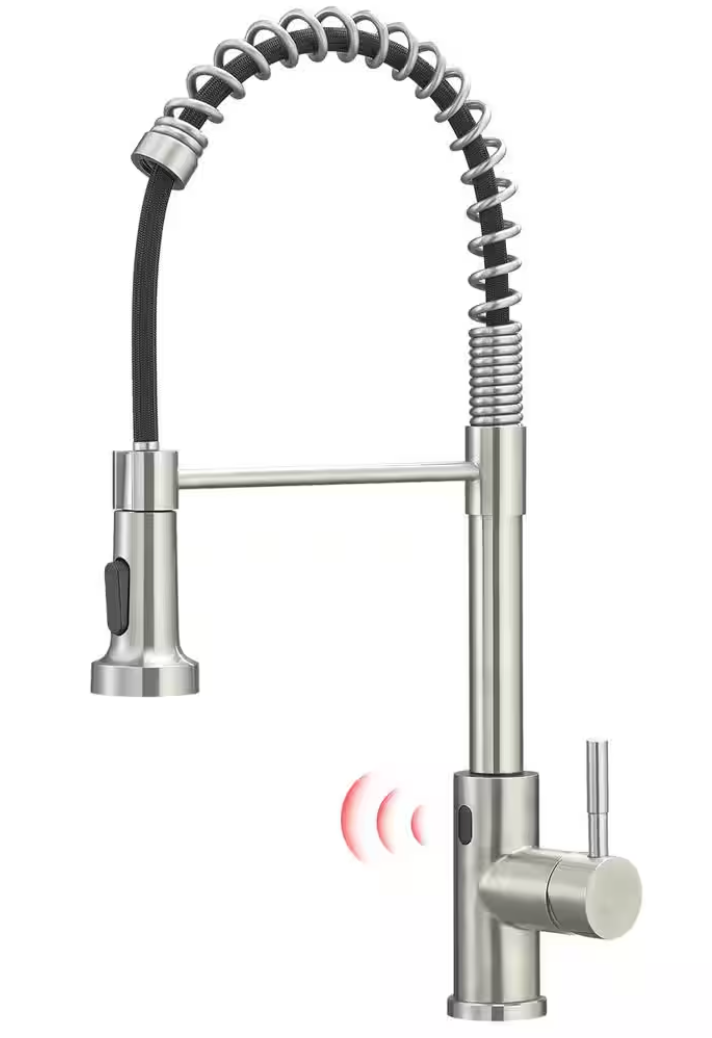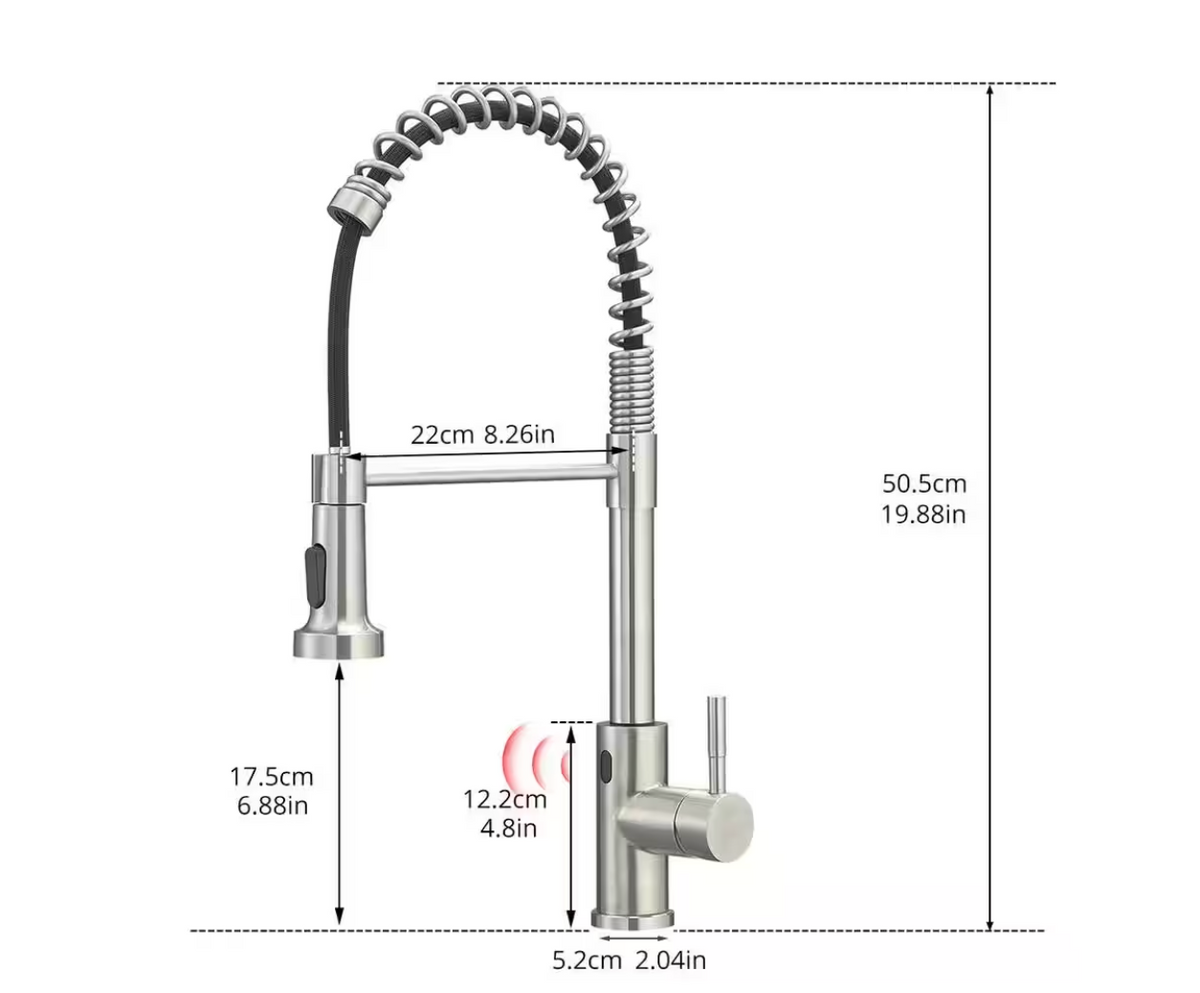It's common for people to experience changes in their hand function as they age. Arthritis, carpal tunnel, and numbness or tingling can all make it difficult to perform everyday tasks like turning on the stove, closing a door or turning a faucet.
And unfortunately it can be difficult to know which home modifications can help ease arthritis symptoms at home. So, if you or a loved one is noticing challenges while using appliances in the kitchen - one of the best places to start is to address the current faucet being used.
There are a variety of accessible faucet handles and spouts that are not only cost-effective and easy to install but can greatly improve independence at home.
A Home Modification That Helps
Easy Faucet Handles
A standard turn knob can be very difficult to operate. They are made with aesthetics and cost-effectiveness in mind but do not always account for those who have difficulty with gripping. If you or a loved one finds it difficult to turn the current faucet handle at home, you may want to consider replacing it with one of the accessible faucet options below.
Lever handles
Lever handles are a great accessible faucet option. They allow users to utilize faucets by pushing down or pulling up, which generally requires less grip strength and dexterity than turning a knob. This can be especially helpful for those with conditions, such as arthritis, that affect hand strength and mobility.
If you’re looking into lever handle options for your home we recommend Midanya’s Chrome Faucet. This is a great option if you’re looking for an affordable and stylish faucet that includes a lever handle.
Key Features:
- Easy to install with all mounting hardware included
- Polished chrome finish that works with a variety of home designs and feels
- Convenient temperature control.
Adaptive handles
These are faucet handles that have been specifically designed for people with arthritis or other hand conditions. These products are often larger, easier to grip, and they may also have a button or paddle that users can grasp instead of a knob or lever.
This type of handle can make everyday tasks such as washing hands or dishes much easier if one is experiencing hand discomfort. There are also a variety of finishes available, so you can choose an option that best suits the style of the home.
There are three types of adaptive handles to consider. These include:
- Push button: To use these faucets, simply push the button in to turn the water on, and push it again to stop the water from flowing. These are a great solution for anyone with difficulty maintaining grip or using their fingers. These buttons are accessible enough to be pushed with a finger, knuckle, wrist, or even elbow.
- Paddle handles: These are similar to push buttons, but instead of pushing a button on the handle, they have a paddle that is held down to turn the water on and released to turn it off. These are great for anyone with a good grip, but has difficulty using their fingers. They are often found with removable spray nozzles that are helpful when doing the dishes.
- Foot pedal: For those who have difficulty using their hands in any capacity, there are accessible faucets that are now designed to be operated with a simple foot pedal. This allows users to turn the water on and off without using their hands. These are also a great option for anyone who has very limited mobility with their upper body.

Touch-activated faucets
Traditional faucets, even with easy to use handles, still require a certain level of grip and dexterity to operate, which can be difficult for those with more severe arthritis or other impairments. If this is the case, we suggest a touch-activated kitchen faucet.
These faucets, using a touch-activated on/off feature, offer a convenient way to improve accessibility in the kitchen. All one needs to do is touch any part of the faucet with a hand, arm, or elbow to turn it on or off - no gripping or twisting is required. This can be a tremendously life changing modification for those who have continuously struggled with their current faucets.
Though there are a few things to keep in mind before purchasing and installing a touch-activated kitchen faucet.
- Sensitivity: Make sure that the sensor on the faucet is sensitive enough to respond to touch, but not so sensitive that it's constantly turning on and off.
- Sensor location: Consider the placement of the sensor - some models have the sensor on the spout, while others have it on the base. There are pros and cons to both - the spout-mounted sensors tend to be more responsive, but the base-mounted sensors are less likely to get accidentally turned on.
- Style: Also consider the style of the touch-activated faucet. Some models are available in a variety of finishes, while others are only available in one or two. To find a kitchen sink faucet perfect for the style of the home, make sure to choose a model with a great finish.
Motion-activated faucets
Another option are motion-activated kitchen faucets.
This type of accessible faucet can help improve independence by making it easy to turn the water on without having to grip, twist or even touch a handle. These faucets can be activated by simply waving a hand in front of the sensor. In addition, motion-activated faucets can help to conserve water by automatically turning off when they are not in use.
If you're looking to implement a motion-activated kitchen faucet at home, be sure to consider some important features.
- Flow rate: Some faucets have adjustable flow rates, making it possible to control how much water comes out.
- Spray settings: Each faucet may have different spray settings, one can choose between a gentle stream or a powerful jet.
- Lights: Some faucets even have lights that turn on when the water is running, there are especially useful for those with limited visibility.
With so many options available, we know it can be challenging to decide which product is best for specific needs and wants. To get you started we suggest looking into Qomolangma’s Touchless Kitchen Faucet. This stainless steel faucet includes a pull down sprayer and is a great addition to any kitchen.
Key Features:
- Automatically turns off within 3 minutes of no activity
- Includes a 360-degree rotation
- Comes with three spray modes

Easy Faucet Spouts
There are also different types of faucet spout designs that may increase safety at home. Changing the faucet spout may seem like a simple modification to make but it can have a significant impact on one’s ability to safely navigate and utilize the kitchen area. Below are a two types of spouts to consider.
Pull-down Spouts
These spouts have a spray head that can be pulled down from the faucet neck. This type of design is great for those who have difficulty holding a pot or pan up to the spout for a long time. By pulling down on the sprout it allows one to clean pots and pans without needing to overexert strength.
As we recommended above, the Qomolangma’s Touchless Kitchen Faucet comes with a pull-down spout feature.
Elongated Spouts
These spouts are slightly longer than traditional spouts, which can make it easier to reach the water. They also provide more clearance underneath, making it easier to fill pots and pans without having to hold them at odd angles. They also have different styles, making this modification feel more like an upgrade than anything else.
Finding The Best Accessible Faucet
Replacing a kitchen sink faucet with a more accessible faucet can be an easy way to make a big impact on you or a loved one’s ability to safely use such an important area of the home.
So whether you’re looking for an upgrade, or want to speak with a home safety expert to consider which faucet option is most appropriate, please reach out to our Client Care Team.











